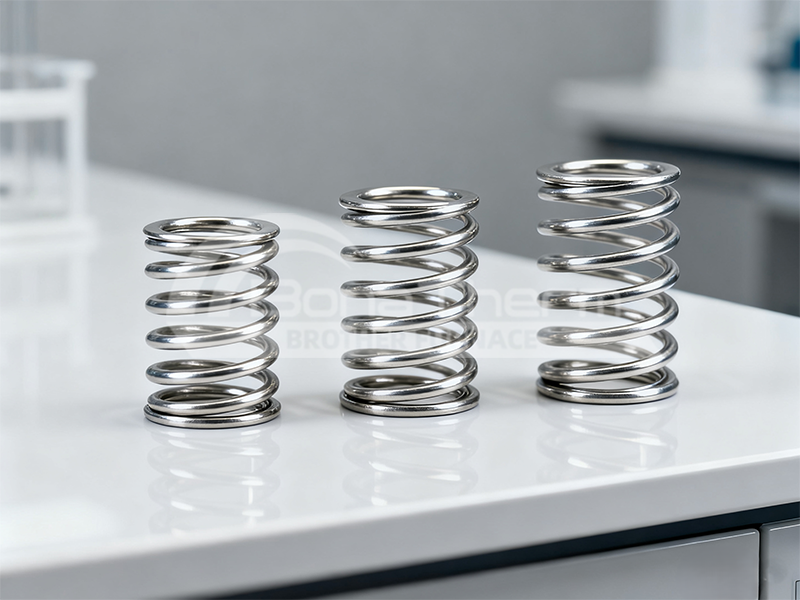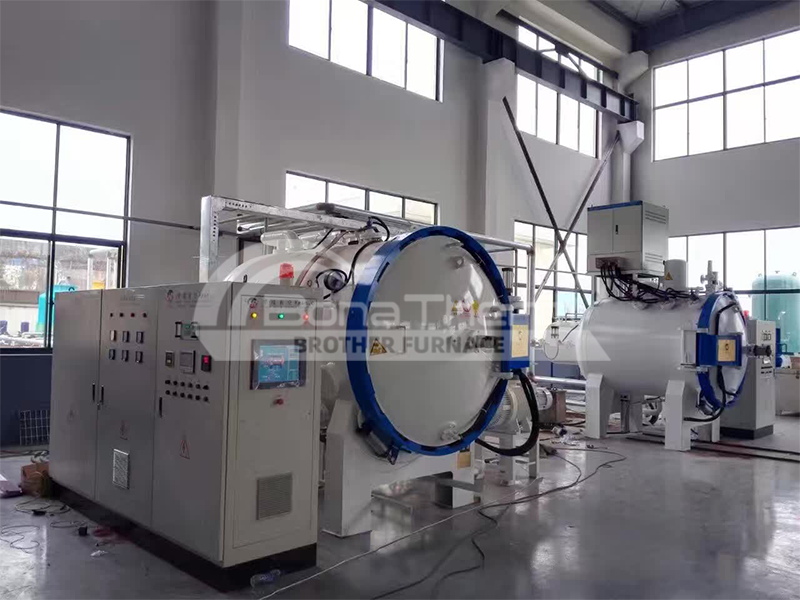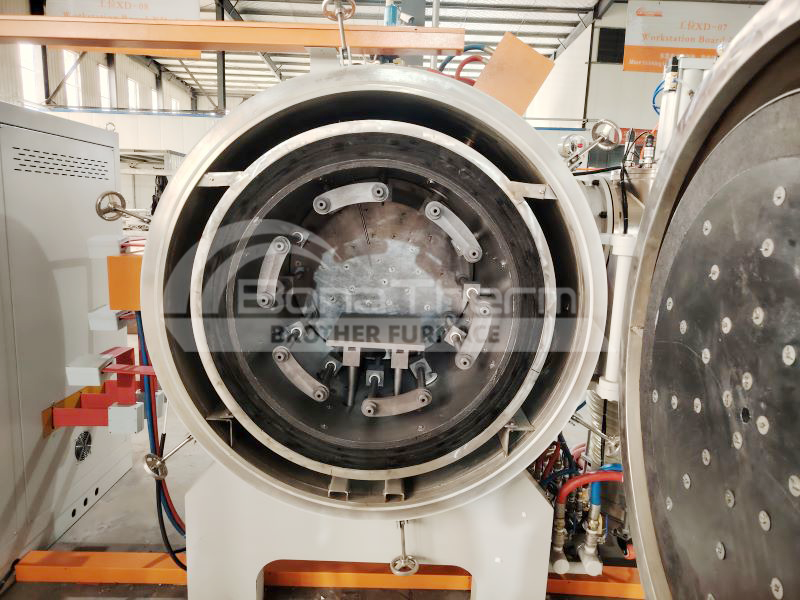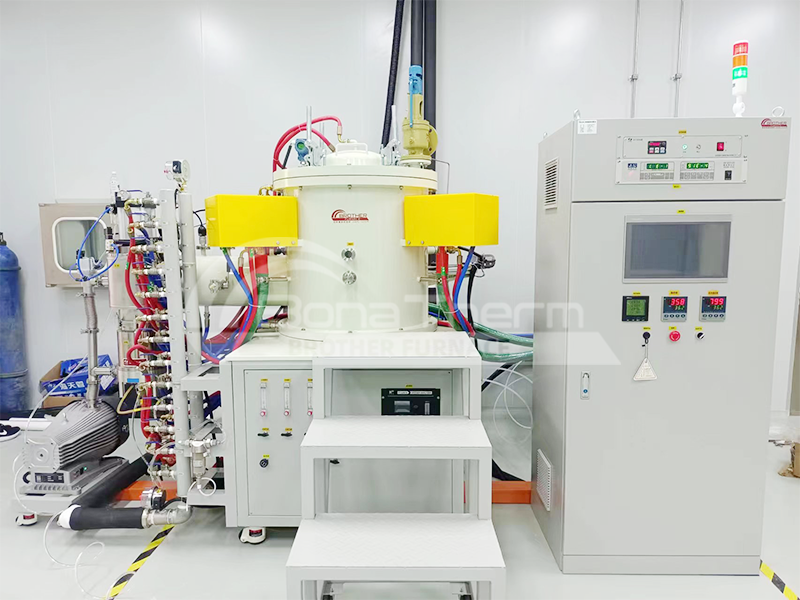Dual Ingenuity of Gas Quenching and Oil Quenching, Empowering Precision Manufacturing
- By: Brother Furnace
- 2025-11-21 00:42
In metal heat treatment, vacuum quenching technology is essential for high-end fields such as aerospace, automotive manufacturing, and precision mold manufacturing, thanks to its core advantages of preventing oxidation, minimizing deformation, and achieving high performance.
Its charm lies in isolating impurities via a vacuum environment and enhancing material properties with precise cooling. Gas quenching and oil quenching are two key supporting processes, each suiting different scenarios with unique advantages.

1. Analysis of Dual Vacuum Quenching Processes: Performance Forging Logics with Distinct Strengths
1.1 Core Principle of Vacuum Quenching
The essence of vacuum quenching lies in the synergy of “vacuum heating+precise cooling”. In a high-vacuum environment, metal workpieces achieve uniform heating, thereby completely avoiding oxidation and decarburization risks.
It also promotes the desorption of internal impurities, such as hydrogen and oxygen, further enhancing material compactness. The cooling link difference is the key to distinguishing gas quenching and oil quenching.
Neither process is superior to the other; they are suited to different application scenarios based on their characteristics.
1.2 Vacuum Gas Quenching: A "Surface Performance Guardian" with Cleanliness and High Efficiency
1.2.1 Basic Process of Vacuum Gas Quenching
Vacuum gas quenching involves placing the heated workpiece in a cooling chamber, filling it with high-purity inert gases, and achieving rapid cooling through gas convection and heat conduction.
1.2.2 Core Advantages of Vacuum Gas Quenching
Its strengths focus on cleanliness and controlability. Inert gas doesn’t react with the workpiece surface, leaving it as smooth as a mirror and eliminating the need for subsequent grinding and polishing, thereby cutting production costs.
The cooling rate is flexibly adjustable via gas pressure, making it ideal for materials with low martensitic critical cooling rates, such as high-speed steel and stainless steel.
1.2.3 Application Scope of Vacuum Gas Quenching
With the development of high-pressure technology, its cooling capacity has improved significantly. It can process densely bound workpieces and even replace oil quenching for certain steels, making it a mainstream technology in fields that require strict surface quality, such as precision tools, medical devices, and electronic components.
1.3 Vacuum Oil Quenching: A "Core Performance Enhancer" with Both Strength and Toughness
1.3.1 Basic Process of Vacuum Oil Quenching
Vacuum oil quenching rapidly transfers the vacuum-heated workpiece to a specialized quenching oil tank, utilizing the high heat capacity and thermal conductivity of the quenching oil for rapid cooling.
1.3.2 Core Advantages of Vacuum Oil Quenching
Compared with gas quenching, its core competitiveness is super-strong cooling capacity. This fully stimulates the mechanical potential of materials such as ultra-high-strength steel and die steel, enhancing workpiece hardness, toughness, and wear resistance to meet the requirements of core structural parts.
1.3.3 Technological Advancement and Application
Modern vacuum oil quenching solves traditional pollution issues via “controllable transfer+oil-gas isolation”, ensuring vacuum purity and process stability. Its “strong cooling+minimal deformation” feature makes it the first choice for aerospace parts, such as landing gears and engine casings.

2. Vacuum Quenching Furnace: Equipment Innovation Achievements Empowered by Processes
2.1 Equipment Value: Bridge from Process to Production
Equipment is the core carrier of technology implementation. Brother Furnace, with years of vacuum furnace R&D experience, transforms process understanding into equipment innovation, launching furnaces that meet process requirements and solve industry pain points.
2.2Vacuum Gas Quenching Furnace: A High-Efficiency and Uniform Precision Manufacturing Partner
2.2.1 Design Concept and Target Application
Adhering to the principles of "high efficiency, uniformity, cleanliness", it’s tailor-made for tool steel, die steel, elastic alloys, and 3D printed parts. Integrating quenching, sintering, and brazing boosts equipment utilization.
2.2.2 Heating and Cooling System Advantages
It utilizes graphite heating elements and felt composite insulation, with a maximum operating temperature of 1350°C. The circular arrangement of graphite nozzles ensures uniform heat transfer and gas injection, reducing deformation.
Equipped with a high-pressure impeller fan and a multi-stage copper heat exchanger, it cools from 1150°C to 250°C in under 7 minutes, thereby improving production efficiency by 30%.
2.2.3 Precision Guarantee Measures
Optional molybdenum strip heating and foil heat shield prevent volatilization and pollution, ensuring the quality of 3D printed parts. Precisely adjustable gas pressure adapts to various workpiece loads, achieving “one-time forming”.
2.3 Vacuum Oil Quenching Furnace: A Safe and Durable Strength-Toughness Forging Equipment
2.3.1 R&D Orientation and Target Materials
Focusing on “safe controllability and durability,” it’s the preferred choice for die steel, alloy structural steel, and ultra-high-strength steel heat treatment, offering advantages in safety, performance, and durability.
2.3.2 Multi-Layer Safety Protection Design
Pneumatic lifting with variable-speed double chains and A3 steel tracks ensures stable workpiece transfer, reducing collision deformation.
Two independent temperature control systems: one locks at 80°C to prevent fire, the other controls oil temperature to avoid soft spots.
2.3.3 Performance and Durability Advantages
A real-time monitoring camera in the cold chamber facilitates parameter adjustment. The upper-mounted oil stirring system reduces maintenance costs. The heavy-duty steel chamber has a 35-year service life, resulting in reduced long-term costs.
Widely used in aerospace ultra-high-strength steel treatment and large mold quenching, it enables efficient production with minimal deformation.

3. Brother Furnace: Empowering Manufacturing Upgrading with Ingenious Equipment
As a benchmark brand in vacuum heat treatment equipment, Brother Furnace integrates process essence into R&D, launching vacuum gas quenching and oil quenching furnaces that inherit process merits and achieve performance upgrades.
Our quenching furnaces are widely used in the production of precision parts, aerospace components, 3D printing, and mold processing, meeting the diverse needs of various industries and providing customized solutions that reflect the superior quality of “Made in China.”
We will continue to deepen our research and development, promoting the advancement of vacuum quenching technology and helping China’s manufacturing industry transition towards high-end precision manufacturing.



